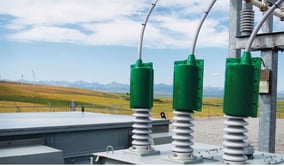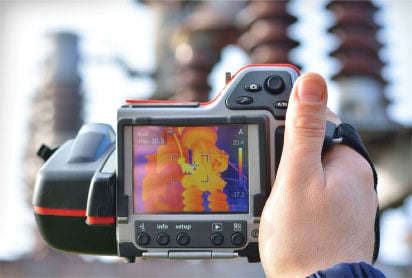Hubbell | Greenjacket Inc. is pleased to announce that it has received permission to distribute a white paper entitled, "Under the Covers: Investigating Animal Mitigation Covers and Infrared Thermography" by Jay Bowen and Will Bauer on the issue of IR Scanning of electrical equipment while it is protected by cover-up.
About the Authors
Jay Bowen is an ASNT NDT Level III -TTIR Certified Infrared Thermographer and licensed master electrician. He has provided infrared training and consulting services to many hundreds of national companies for over thirty years. Jay quite literally wrote the book on infrared training having designed cutting-edge training materials. He has also directly taught thousands of infrared camera customers to properly operate and apply techniques of thermographic or infrared camera equipment.
“I truly believe that the common misunderstanding of cover use inhibiting thermography is a fundamental miss in understanding the basic concepts of thermography and the over reliance on temperature criteria decision-making.”
– Jay Bowen
Will Bauer (P.Eng.) is The Moment Groups founder and lead technology expert and engineering consultant. The Moment Group of companies researches and develops technology in movement computing and activated data. Moment also provides technical services to select clients regarding SRED reporting, consultation papers and technical writing. Will is the inventor of a custom gesture-based media processor, Spatio, and several applications currently driving the company’s technology. Company Research Director Pamela Anthony guides research and development and lends her experience as a journalist and writer to the company’s tool kit.
Executive Summary
This paper examines the potential to integrate two important means of preventative maintenance in electrical utility systems – bird and animal contact mitigation and infrared thermography. While the concept of reliable thermographic imagery of covered connections is conceptually valid, and practicably feasible, until now these two precautionary measures have ostensibly competing operational criteria.
With validation of this concept, electricity supply operators can develop training and field-testing protocols, using quantitative and comparative methods that can provide actionable preventative maintenance data.
To this purpose we will be looking at a recent study, conducted by Bowen Infrared, which addresses the issue through a series of controlled experiments.
Introduction
The essential goal of electrical utility preventative maintenance programs is to solve problems before they lead to safety concerns, unexpected downtime, and expensive outages.
Bird and animal contacts are one of the leading causes of electrical equipment failure and power outages for electrical utilities worldwide. Mitigation strategies safeguard both animals and electrical equipment. Contacts are preventable with properly fitted electrical component covers correctly installed during the life cycle of the equipment. Significant improvements to power system reliability can be achieved with the right protective cover-up.
Energy emissions that create anomalous hot spots in electrical systems are likely indicative of faulty connections or equipment failure. Infrared thermography is a diagnostic tool that measures surface thermal temperatures. It’s a non-contact method of viewing equipment which detects and displays IR data that may indicate equipment risks not evident to the naked eye.
These two forms of preventive maintenance programs have seemingly competing operational criteria. The cover’s primary function, to fully isolate contact points, creates an insulative barrier between the IR imager and the area being viewed.
If these preventative maintenance strategies could function together with a high level of confidence, electrical utilities could conceivably collect actionable data about operational fitness from thermographic imaging while mitigation covers are in place.
The following study, recently conducted by Bowen Infrared, addressed this issue. Through a series of controlled experiments, the study examined the potential efficacy and accuracy of thermographic imaging with mitigation covers in place over heated electrical connections.
The Study
 The investigation was designed to determine if thermography is able to reliably detect the temperature of a connection point if it is under a cover, as well as how closely thermographic readings correspond to actual temperatures.
The investigation was designed to determine if thermography is able to reliably detect the temperature of a connection point if it is under a cover, as well as how closely thermographic readings correspond to actual temperatures.
It further addressed the level of expertise needed to evaluate the thermography results, taking into consideration the variables in cover surface heat transfer. Finally, based on initial results, this report suggests options for testing and data collection in the field.
To download the full white paper, click here.


 The investigation was designed to determine if thermography is able to reliably detect the temperature of a connection point if it is under a cover, as well as how closely thermographic readings correspond to actual temperatures.
The investigation was designed to determine if thermography is able to reliably detect the temperature of a connection point if it is under a cover, as well as how closely thermographic readings correspond to actual temperatures.


